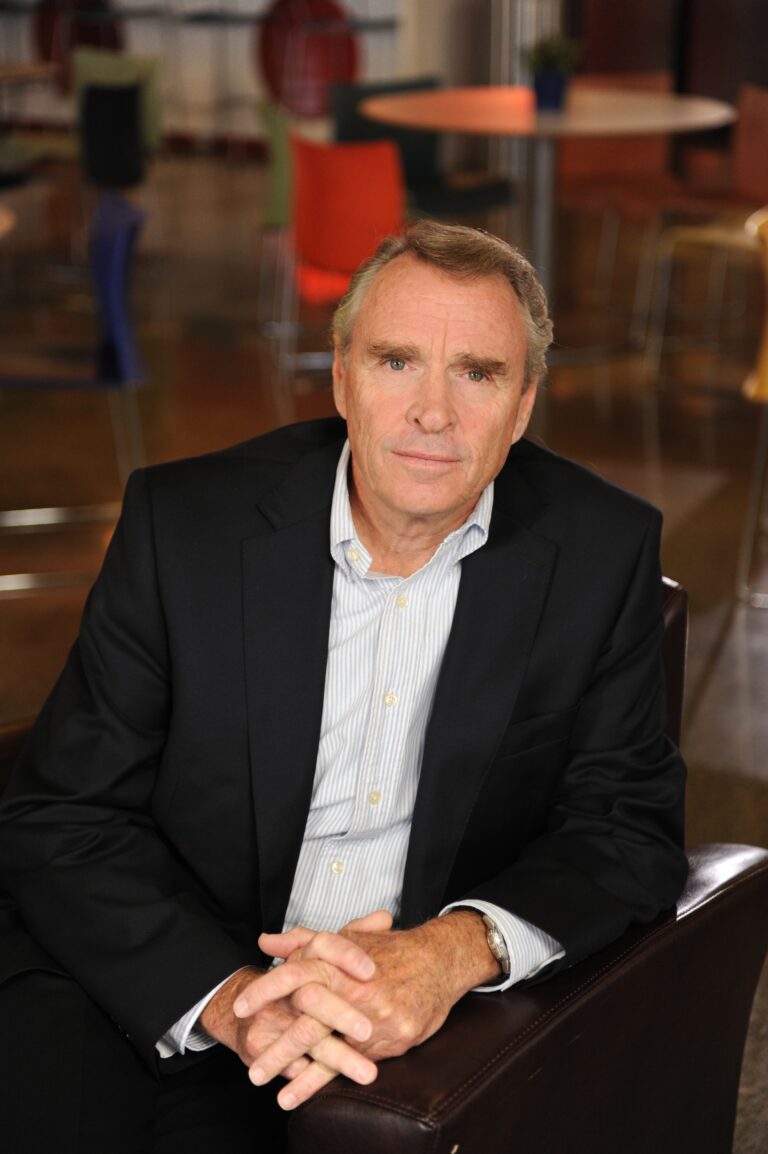Employee Mindset and Why it is Necessary to Fully Release Human Potential
- Leadership and Succession
- Author : Phil Geldart
- May 28, 2021

Your company moves at the pace of your average employee. Your average employee's pace is determined by their mindsets!
Having truly high-performing talent within an organization is the next frontier to accelerating corporate performance.
Over the past decades, there were a number of areas where organizations focused to achieve this objective: process improvement; quality initiatives; innovation; empowerment; and leadership development. Each of these has played a role as organizations have continued to become more competitive and effective within the marketplace.
However, a new breed of worker is emerging and with it a need for a new focus.
This new priority does not negate the other areas, however it does require that additional attention be paid to the untapped potential that is stored up within every worker, within every workplace. To unleash that potential requires a focus on two major areas: organizational leadership skill, and individual mindset.
Leadership capability is essential, but...
The influence that a leader has over the engagement, performance and growth of those looking to them for leadership cannot be underestimated, and this must always be a priority. Further, it dramatically influences the ability of an organization to build the right performance mindset into their team members – through personal example and coaching.
...Employee Mindset is emerging as the next frontier
The area that has so far been underleveraged by many organizations is the mindset of each individual within the organization for which they work. Attention within a talent strategy has always been paid to the need to develop the competence, that is knowledge and skill, of the workforce. However, very little attention has been given to developing the actual mindset that predictably results in individuals to perform to their full potential.
Today’s workforce is made up of individuals who have access to a broad range of information, who have a high expectation of their leaders, who are far more aware of social and environmental issues. They have an expectation that their words will be appreciated and reflected in the way in which they are treated beyond their relationship with their immediate supervisor. In exchange, they are more than willing to give their very best to the organizations that are employing them. The dynamic, often virtual, and diverse nature of work has moved past a single leader shepherding all of their teams’ interactions across functions.
It is a fallacy to believe that individuals simply come to work only for a paycheck; many individuals come with a desire to contribute to their fullest, and as much as they are able to contribute to the ongoing success of the enterprise. This gives them a sense of purpose, as well as an opportunity to make a difference. It enables them to support the organization’s need for continued success and with that the accompanying job enrichment, and security, that follows.
How then to truly tackle the need for shaping a mindset consistent with the individual’s desire to excel, and that individual’s potential to perform at a high-level?
The five components necessary to power personal performance

The answer lies in shaping a talent development strategy that reaches far beyond historical areas, and one that truly recognizes the potential within every individual to achieve far more than is often expected or anticipated. The basis for the strategy lies in five key areas, and it falls to the talent development team to train and educate in each of them.
1. Having the Courage of Your Convictions
Typically each individual within an organization knows their own job & consequences better than anyone else. They work at it every day, they understand its challenges in its opportunities. From this perspective, they are very often able to see ways to improve efficiency and customer service as well as practically mitigate risk.
However, these convictions do not always find a way into the organization because, for whatever reason, individuals may feel as though they will not be listened to, their opinions and thoughts not valued, or their suggestions ignored. Nonetheless, as organizations look to improve their performance there is the need to tap into the insight and wisdom of the entire workforce. One step towards that objective is to create a culture where it is easy for people to speak up.
Perhaps more important than the culture though is that each individual have the courage of their own convictions, and the courage to speak up based on those convictions. Creating this mindset is critical in any talent development strategy as it brings each employee “into the boat” with their leader, encouraging them to bring forward their insight and observations. For the individual to be successful doing this there are three specific behaviors on which that the talent development team should be focussed.
The first is recognizing the responsibility individuals have to clearly know the subject around which they have personal convictions. It’s not sufficient simply to have a conviction without it being rooted in a knowledge of the area being discussed, the consequences of acting or not acting, and a full appreciation of the context within which this particular observation lies.
Simply having conviction is not sufficient when bringing thoughts, ideas, or insight to a leader. What is truly necessary is a clear knowledge of the subject, that is both objective and seen to be well thought through.
The second component is when sharing their convictions, the individual must remain objective and not feel as though their perspective, no matter how valuable, is the only one. As they share convictions that are clearly rooted in their own personal experience, they must still appreciate the fact that others may not agree, and so present their perspectives objectively and dispassionately.
The third area is that their thinking must be clearly presented. Leaders will have a difficult time evaluating input when it is not clearly presented and articulated in a way that can be not only understood but acted upon. This ability to present clearly is a critical and complementary skill to the mindset of having the courage of one’s convictions. Convictions are not clearly understood of little value.
2. Speaking Truth to Leadership
It is often very difficult to bring truth to leadership. It’s not that the leaders are unwilling to hear the truth; often they have their own points of view to which they’ve committed, or they are busy, or in a hurry, or feel they have already dedicated enough time to the topic. Each of these instances can make it very difficult to speak the truth to a leader…. they are in a position of authority, and may already be inclined to a course of action.
However, employees with the mindset of ensuring the well-being of the enterprise, and who have the company’s best interest at heart, may feel the need to raise an issue with leadership or challenge some assumptions. They believe they have insight from their vantage point that is not yet fully appreciated by the leader.
From their perspective they recognize that the leader is acting without all the information, or with faulty information. In this case, they need to be willing to speak the truth to leadership. Doing this successfully requires three skills.
When speaking the truth it’s vital to acknowledge that different perspectives exist. Not everyone sees an issue in the same fashion or the same way, consequently, when speaking truth that truth must be presented in a way that demonstrates respect for other perspectives. The leader is then better able to see it in context, more objectively, and so more readily judge it on its own merit.
Speaking truth to leadership is not license for rudeness, insensitivity, or moral superiority. Rather, it’s important to be respectful. Reflect the fact that there are other perspectives and points of view being shared, or that could be shared. Showing respect means acknowledging the existence of other perspectives, as well as acknowledging the accountability the leader carries to consider each of them. Presenting ideas respectfully, but truthfully, enables them to be heard without undue bias or prejudice, and increases the likelihood of them being appropriately appreciated.
It’s very important when speaking truth to clearly explain the consequences that are foreseen. Very often some action or decision may appear to be the best or right decision in the moment, and in the absence of any additional information. When unappreciated consequences are brought forward, then the leader is better able to appreciate the message, and give it the appropriate consideration.
Very often those at the front line have a much greater appreciation for the consequences of decisions or actions taken by leaders, either immediately or in the future. Speaking truth to leadership allows that insight to be shared, but without the inclusion of consequence, it is merely a personal perspective or point of view. When the foreseen consequences are included then the truth of the message is more readily apparent.
3. Personal Integrity
Rarely do individuals actually lack integrity in the purest sense of the word; however, when intention does not match action is when integrity is called into question.
Integrity is something that others perceive about an individual, and so that individual must be mindful of the need not only to operate from a sense of personal integrity but also be sure that their underlying motivations and intentions are also clear; their actions can then be viewed in the appropriate light.
When leaders have members on their team with high personal integrity then considerable trust develops between the leader and those they are leading, as well as among the members on the team, and it is this trust which is necessary for optimum performance.
One of the most effective ways to demonstrate integrity is to show consistency. That is, the commitments that have been made are delivered as promised: personal accountability is consistently demonstrated. Similarly, when words are spoken with respect and honesty, integrity grows.
Delivering on the things committed to in a way that is appropriate to the culture also contributes greatly to personal integrity, and high integrity contributes to that individual being highly valued by their leader.
Organizations will often have cultural values or norms which they promote, and the society in which we live has its own standards. Things like truth, honesty, respect for one another, empathy, and commitment to the well-being of the team are some aspects that contribute to an individual’s character. When employees consistently demonstrate behavior that models corporate and societal values then they are seen to model strength of character, which is, in turn, a vital component contributing to personal integrity.
4. Competence
Individual competence in the job or profession is essential. This competence is reflected in the outcome of an individual’s work, in relationships with others, in the perceptions of customers, and in the level of accountability, that can be assigned.
One component of competence is knowledge. That is the intellectual understanding and appreciation of each aspect and component of the job, associated regulations and requirements, and the technical know-how required to be successful. Knowledge provides each individual with an understanding of how best, or most appropriately, to tackle a task.
The second aspect of competence is skill. Skill is the practical application of knowledge on the job; it is the actual ability to do what needs to be done, applying knowledge as well as experience, judgment, and practical know-how. As knowledge and skill grow so competence increases.
Knowledge without skill is not practical, skill without knowledge may limit performance ability. Taken together competence improves; consequently maintaining a focus on improving individual knowledge and enhancing individual skills is necessary to ensure optimal performance.
However, competence that is not actually practical can often work to the detriment of the team, the individual, or the leader. It’s important that individuals demonstrate competence in the work which they do that is practical and effective. It must serve the needs of those who are relying on them, the customers who are looking for an outcome, and the leader looking to see accountabilities fulfilled.
Very often this concept of being practical can be lost in a well-intentioned effort to get something done but which, when completed, is so complicated or intricate that it is of no practical value, and so that effort has been wasted.
5. Be Aspirational
Aspirations are not solely focused on the desire to “get ahead“, or be promoted. Rather it refers to the intrinsic motivation individuals have for personal excellence and the pride which they have in their work. These motivational aspirations in high performers are about their personal and team accomplishment and impact and are demonstrated in three specific ways.
The first is that the individual strives for excellence in all that they do. They do not need to be controlled, motivated, encouraged, or managed to achieve excellence. Rather, their own internal desire creates not only the determination to succeed but to do so brilliantly. They are consistently aware of what excellence looks like, and make it their personal goal to achieve it. Once achieved high performers then almost immediately look to “raise the bar” and continue to set new standards of excellence interacting with it less as a destination and more of an imperative.
Secondly, they embrace challenges. Individuals with high aspirations do not shy away from a personal challenge, or roadblocks that surface in the course of fulfilling accountabilities. Rather they expect and embrace those challenges, seeing them as opportunities for personal and team growth. These challenges stretch them and their teams to look outside for best practices or new ways to tackle an issue, and are determined to overcome these challenges for the well-being of the enterprise.
The third aspect is that each of these individuals respects their own potential. They recognize that they can develop in a number of areas, that their competencies can improve, and that they can continually improve. They truly understand that each person has the potential to grow and learn, and they are willing to enhance this potential within themselves. They know their capabilities and their limitations and respect both, but do not simply remain passive as they approach their work, but rather look to see how the potential within them can be developed to enhance their performance.
These five aspects are integrated
These five aspects of what it takes to create a mindset of personal performance excellence are integrated. That is, they do not each exist independent of one another. For example, personal integrity is necessary when speaking truth to leadership, and as competence grows so the courage of one’s convictions can grow. With increased competence comes a greater awareness of what should be shared with leadership, despite it at times being difficult to do so; and a motivation for excellence can provide an impetus to overcoming resistance to speaking truth to leadership.
Summary
As organizations work to develop their workforce into a highly effective source of competition they need to do more than just think of traditional training. They now need to move their thinking into the area of the mindset necessary to fully release human potential. Challenge and equip both leaders and individuals to demonstrate the qualities that are necessary to truly power personal performance.

About the author

Related Topics
How to Build a Culture of Continuous Learning: 6 Proven Ways That Work
In today’s fast-changing business landscape, building a continuous learning culture is key to staying competitive. Learn six proven strategies to engage employees, develop talent, and future-proof your organization through professional development and leadership training.
7 Steps to Building a Robust Training Roadmap
A well-structured training roadmap can significantly enhance employee performance, boost productivity, and foster a culture of continuous learning.
The Impact of Social Proof on Workplace Behavior
Have you ever found yourself doing something at work simply because everyone else was doing it? This phenomenon is known as social proof, and it can have a significant impact on employee behavior.



